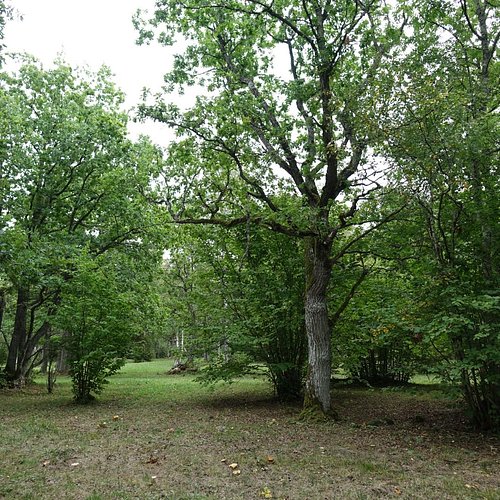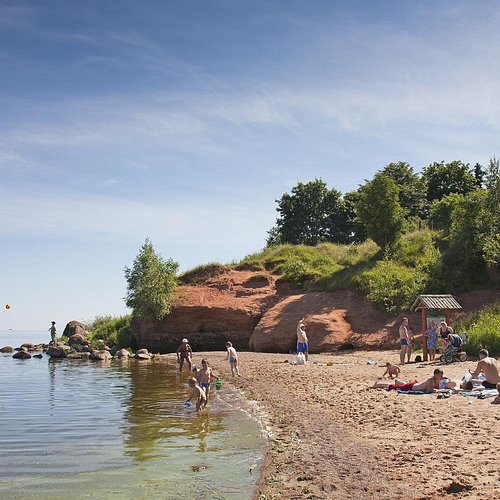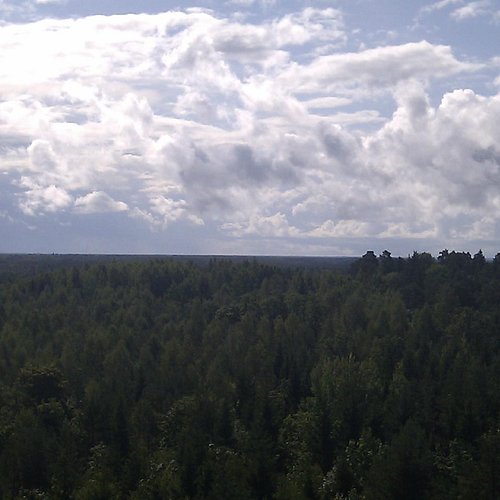What to do and see in Estonia, Estonia: The Best Nature & Wildlife Areas
– in Europe (green & grey)
– in the European Union (green) – [Legend]
Restaurants in Estonia
1. Kostivere Karst Area
Overall Ratings
5.0 based on 1 reviews
Kostivere limestone karst area, where the Joelahtme River flows under the ground, is one of the largest in Estonia – 2.9 km in length and 0.5 km in width and very rich in different interesting karst formations. It is possible to find a lot of little karst caves here. The most frequent formations that can be found here are niches and hollowed-out parts of the riverbank, which represent transitional karst formations between the surface and underground. The most extensive of these are located in the middle part of the karst area. Karst caves also include hollows under natural bridges. There are four caves in Kostivere karst area. The largest of them is Karjakelder, which is 6 m in length, up to 4 m in width and 2.5 m in height.
2. Otepaa Nature Park
Overall Ratings
5.0 based on 6 reviews
Otepaa Nature Park is the largest landscape protection area in Estonia (22,430 hectares). It forms the central part of the hilly Otepaa Highlands, of whose 1180 square kilometres it covers 19%. The nature park is located in the northern part of Valga County in Otepaa, Palupera, Puka and Sangaste rural municipalities. Access is available to all of the nature park, but you must respect your surroundings. Further information is available from the nature park centre at Kolga tee 28, which is open from Monday to Thursday from 08:00 to 17:00 and on Fridays from 08:00 to 14:30.
3. Laelatu Wooded Meadow
Overall Ratings
5.0 based on 1 reviews
Laelatu wooded meadow, not far from Virtsu, is one of the biggest and best-preserved meadows of its kind in northern Europe. It is rich in plant life, with more than 400 species of vascular plants and 30 species of moss. The most common trees here are oak, ash, white birch and maple. Two-thirds of the orchids that grow in Estonia can also be found here.Did you know...?- Laelatu wooded meadow holds a record for number of species per square metre: in 2001 a sample square metre of ground was counted to have 76 different species of vascular plants. This could well be not only the Estonian but also the European record!
4. Kuimetsa Karst Area
Overall Ratings
5.0 based on 1 reviews
Kuimetsa is home to one of the most extensive and unique karst areas in Estonia. Visitors to it will see collapsed valleys, funnels, hollows, channels and caves. Five of the caves in the area are big enough to walk into. One of the biggest is 12 metres long and 8 metres wide and forms the opening of a collapsed funnel. During times of high water you can watch the flows passing through the hollows and channels and hear the rush of the water underground; at drier times, there is hardly any water to be seen at all.. Did you know…?*Here you will find Estonia’s biggest karst caves*The chronicles of Henry the Latvian claim that the ancient Estonians sheltered in these caves from aggressors
5. Matsimae Puhajarv Recreational Area
Overall Ratings
5.0 based on 1 reviews
Matsimae Puhajarv is a lake in Jarva County which is 5.5 hectares in area and 8.1 metres deep. The eastern shore of the lake is sandy, and here you will find a State Forest Management Centre recreation area and campsite. The rest of the lake is surrounded by bogs and pine trees. A hiking trail measuring 7.5 km starts (and ends) here that leads to Simisalu. The trail boasts excellent views over the diverse landscape of the Korvemaa area.
6. Kallaste outcrop
Overall Ratings
5.0 based on 1 reviews
The longest Devon sandstone outcrop in Estonia is located in Kallaste - the measurements done in 2001 showed that it is about 930 metres long. The maximum height of the outcrop is 8 metres. Starting from the south side of the town and moving towards the central square, you can see 11 outcrops. When the water level rises during high waters, the waves chip away the outcrop, creating many caves in th
7. Eesti Vabaohumuuseum
Overall Ratings
4.5 based on 1,039 reviews
Within just a 15-minute drive from the center of Tallinn there is a delightful place – the Estonian Open Air Museum that invites you to see rural architecture and get acquainted with village life. The 14 farms of the museum show the visitor the life of families of different income and occupation in the 18th-20th centuries. As in anyreal village, there is a church, an inn, a school, a number of mills, a fire station, a village shop and net sheds by the sea. Although 74 buildings have been brought over so far, the museum is far from being completed; it is constantly changing and developing. You can have good time and also learn something at the Estonian Open Air Museum in any season!
Reviewed By SharonBB - Panama City, Panama
Take a walk through history...hundreds of years of history of this northern country...from early farmers and fishermen, blacksmiths and more...school house, windmill...Excellent explanatory "plaques" in Estonian, Russian and English; some places other European languages. Set in beautiful forest. Take a break and enjoy. So much to learn!!
8. Vormsi Island
9. Viidumae Nature Reserve
Overall Ratings
4.5 based on 9 reviews
The ecological reserve was established in 1957. The area of the ecological reserve constitutes 1873 ha. Different forest types can be seen here, from swamp forests to high pine forests. The Burgundy snail, the biggest land snail in Estonia, lives on the grasslands and greenwoods. The wooded meadows, semi-natural biotic communities that are typical for Saaremaa but almost extinct, are preserved in the Viidumae ecological reserve by means of traditional maintenance methods.Good to know: The Viidumae ecological reserve is located in the highest and oldest part of Saaremaa.85% of Viidumae are covered with woods.
10. Parnu Coastal Meadow Protection Area
Overall Ratings
4.5 based on 21 reviews
Coastal meadows and reed thickets line the sandy Parnu Beach almost to the extent of the entire city. The Parnu Coastal Meadow Protection area was created in 1958 to protect endangered and rare plant species and communities, coastal meadows, creeks and moving dunes as valuable habitats.The coastal meadows in Vana-Parnu and Raekula districts are the most interesting. The dryer Vana-Parnu Meadow has been maintained and cut for decades. A bird-watching tower and a small hiking trail were built here in 2008.Come and enjoy pure nature in the midst of the city!









